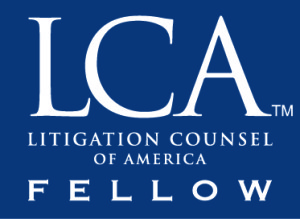What Kind of Damages Are Available in a Medical Malpractice Suit?
Millions of Americans trust doctors, nurses, and other hospital staff members with their healthy every year. Unfortunately, distracted doctoring and medical malpractice continue to plague hospitals and clinics throughout the country.
Approximately 2 million healthcare-associated infections occur every year, contributing to nearly 100,000 deaths and costing more than $4.5 billion in unnecessary healthcare costs. Approximately 13.5 percent of hospitalized Medicare beneficiaries experience an adverse medical event while in the hospital, and physician reviewers found that 44 percent of those events were clearly or likely preventable.
If you choose to pursue a medical malpractice claim, it is important to know the full range of potential compensation. Damages in a personal injury case are divided into two categories: compensatory and punitive damages. Compensatory damages are far more common, and they are designed to compensate the plaintiff for losses suffered as a result of the medical event.
Compensatory damages in a medical malpractice claim include:
- Additional medical costs associated with the injury
- Future medical costs (such as rehabilitation) incurred by the injury
- Lost wages
- Lost earning capacity
- Pain and suffering
- Mental anguish
- Loss of enjoyment of life
- Loss of consortium
- Wrongful death (filed by the deceased’s dependents or heirs)
There is no limit on compensatory damages in the state of New Jersey; in other words, as long as you can prove the monetary amount of your losses, you are eligible to recover them in a medical malpractice claim.
In cases of extreme negligence or reckless behavior, punitive damages can be awarded. These damages are intended to punish the healthcare provider for particularly egregious conduct and deter any such behavior in the future. Punitive damages are limited to $350,000 or five times the amount of compensatory damages (whichever is greater) in New Jersey.
There is a two-year statute of limitations on medical malpractice suits in the state of New Jersey. This means that, starting on the date of the injury, you have two years to file a medical malpractice claim or you will be barred from bringing the suit. In the event that the injury is not noticed right away, the clock starts running on the date the patient becomes aware of the injury or should have reasonably become aware of the injury.
In order to win damages in a medical malpractice claim, you must prove four key things:
- A doctor-patient relationship existed: As long as the health care professional was treating you directly, this relationship is typically easy to prove. The relationship can be more difficult to prove if the doctor in question had a team or an assistant handling direct treatment (although it could have been the doctor’s orders or lack of face-to-face interaction that caused the injury).
- The healthcare professional was negligent: To prove negligence, you must be able to show that the health provider acted in a way that a competent doctor would not have if presented with the same circumstances. In other words, it is not enough to prove that an error occurred or prove that a treatment did not have the desired effect; you must show that the action or error was outside the bounds of what a competent doctor would do in the same situation.
- The negligence caused an injury: The question here is whether or not the doctor’s actions were the true cause of the injury. Since medical malpractice often arises from patients who were already sick at the time, it can sometimes be difficult to prove that the healthcare professional’s actions were the proximate cause of death or injury, as opposed to natural progression of the injury or illness. Expert medical testimony is generally required to prove that a healthcare professional’s action or inaction led to the injury in question.
- The injury led to damages: The plaintiff must prove that the medical error caused specific harm, such as physical pain, additional medical bills, lost wages, etc.


















